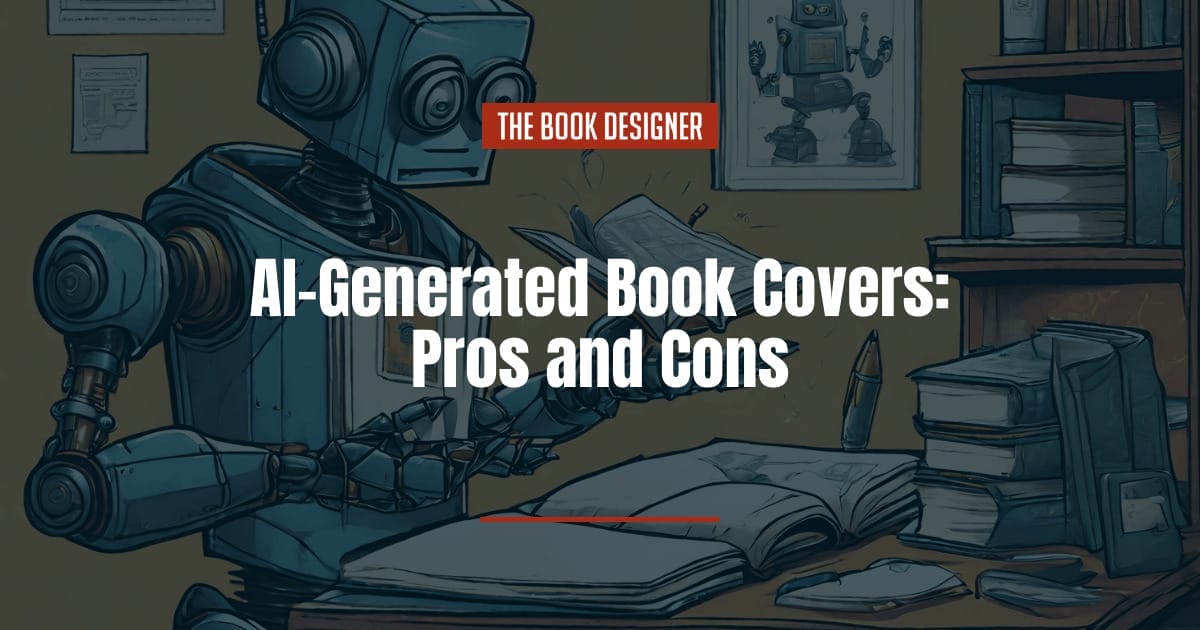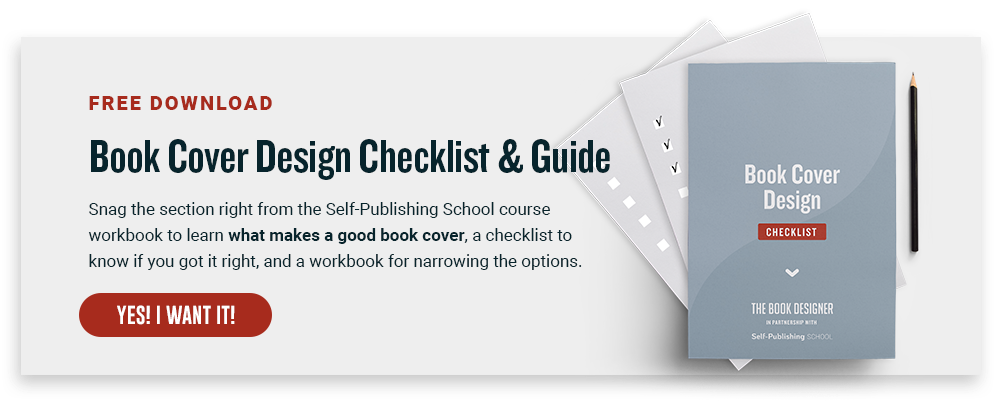Creating an eye-catching book cover can be challenging. “Should I use an AI-generated book cover for my book?” is a question you might ask as you finish writing your masterpiece. The other option is getting a book cover designer, of course. But this option comes with its own hurdles: Where to find a book cover designer? Can you afford one? Will their style match what you need? How long will it take for them to produce something that you want?
With that in mind, using the idea of an AI-generated book cover sounds tempting. It is fast, cheap, and—a perk for introverts!—doesn’t require any human interaction. But this option also poses questions. Can AI-generated book covers ever be unique? How ethical is it? Who owns the rights to such a cover?
In this article about AI-generated book covers, we’ll look at the following:
Pros of Using AI-Generated Book Covers
Without thinking too deeply about it, artificial intellect seems to work like magic. Tools like Canva or Fotor can generate art based on text prompts you enter. You add it to a book cover template, and voila!—you have a book cover.
- It’s cheaper. AI tools are much more affordable than hiring actual designers. Canva has a free version, and the paid one costs only $12/month, while you’d be very lucky if you find a designer willing to create one cover art for $12.
- It can be more efficient. Working with a designer implies a lot of human communication. It can be difficult to explain to a person exactly how you see things in your head, and it will take time for them to try to create something from your prompts. An algorithm does the same in seconds, allowing you to experiment and make changes on the go.
- It allows for more style variations. Designers often have their own distinctive style, which might not match the pictures in your head. AI will enable you to try many things or create images in the style of certain artists, which can help you decide what you want in a book cover.
- AI adapts to the market. AI doesn’t create designs out of thin air—it bases them on the data it used to learn. This data can include current design trends, reader preferences, market demands, etc.
- It doesn’t require human interaction. Not everyone feels comfortable working with new people, and communicating your vision to another person can be challenging. You might feel more comfortable interacting with a machine than a living and breathing designer.
AI-generated book covers can be an easy, fast, and inexpensive solution for self-published authors. However, it also has its drawbacks.
Cons of Using AI-Generated Book Covers
The main thing you need to know about AI art generators is that the art they create is derivative in nature. Artificial intelligence isn’t sentient or “creative” in a human sense—it makes images based on patterns and data it has learned, but it doesn’t have consciousness or intention. This leads to several issues:
- AI lacks originality. While AI-generated covers can look good, they can have the same problems as book cover templates—a resemblance to other cover art. This makes it difficult to create truly unique art with such tools. If the cover design closely resembles an existing work, it can raise concerns about plagiarism and copyright infringement.
- It doesn’t understand nuance. Human artists can infuse their art with symbolism and emotions based on their (or the author’s) vision. A machine can only draw exactly what you tell it to draw—and here lies the problem. As authors, we create a lot of meaning in our books. But if we try to give such a task to AI, it can overstuff the imagery with over-the-top symbolism, which is not great.
- It amplifies human biases. AI isn’t great at analyzing whether a depiction is biased—it can only create images based on current data, which also includes things like widespread negative stereotypes. For example, if people from a certain culture are usually unsympathetically depicted in art, the algorithm will recreate such depiction without having a way to check if this is accurate. Studies have shown that AI displays a lot of inherent bias, so you’ll want to triple-check images to make sure you’re not creating something offensive.
- It’s hard to create exactly what you’re imagining. It’s not always easy to explain to a person how you see your cover—and it can be even more difficult to explain it to a machine that doesn’t possess abstract thinking and takes things literally.
- You still must add typography. AI art generators can create images for you, but eye-catching typography plays a big role in making your book cover look professional. This means that if you lack the skills of a typography designer, you’ll still have to hire someone (although there are free tools to help you with that, too).
Because of these drawbacks, you can’t rely on an AI generator to do 100% of the job of making a book cover for you. But with some editing, refining, adding nuance, and typographic elements, it is totally possible to create an attractive cover.
But there’s another group of issues—the legality and ethics of using AI-generated book covers—or AI art in general.
Legal and ethical concerns of using AI-generated book covers
The use of AI in creative arts is quite a recent phenomenon, so many legal aspects are still unclear—especially when it comes to using it for commercial purposes. Here are the main points you must consider:
- Where does the AI art generator get its data? Machine learning models use extensive data sets to learn and generate art. Does your chosen AI generator use open-access art databases, publicly available images, or user inputs? Support AI tools and platforms that follow ethical and responsible AI development.
- Who owns AI-generated art? This is a complex legal issue that doesn’t have a clear answer yet. The ownership of AI creations depends on the generator you use and the local jurisdiction. Read carefully the terms of the platform you are using. Some may claim rights to the generated content, while others may grant users full ownership.
- How do we disclose the use of AI? Regardless of who owns the final output, if your project uses AI-generated content, you should disclose it. Transparency builds trust with the audience and helps avoid potential misunderstandings. And some platforms, like Amazon KDP, require that you disclose AI-generated content, even if the information isn’t displayed publicly.
Get to know the copyright rules in your area. In certain places, including the United States, art made by AI might not get copyright protection because it doesn’t have a person’s unique creativity and intention. If you’re unsure, it’s a good idea to talk to a legal expert or someone who understands AI and copyright.
There’s also a big discussion in creative circles about the impact of AI on the design industry. Even if you do everything right to use AI ethically and avoid copying others’ work, some people might not like the idea of AI in art. Consider your audience’s attitude towards machine-generated art when designing your book cover.
Takeaways
AI-generated book covers are an idea that self-publishing authors can definitely explore. They are great for people who want fast results or those who wish to spend less money hiring professional designers and illustrators. Another use of such tools is to help writers make sample designs to show to the designer creating the final cover. While AI art generators can not replace a real designer, they can be useful in your toolbox.




